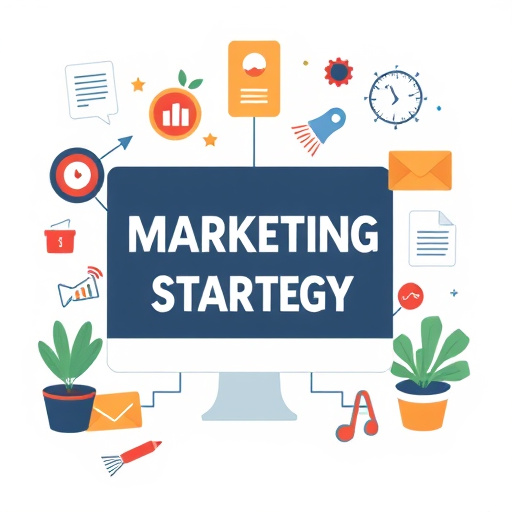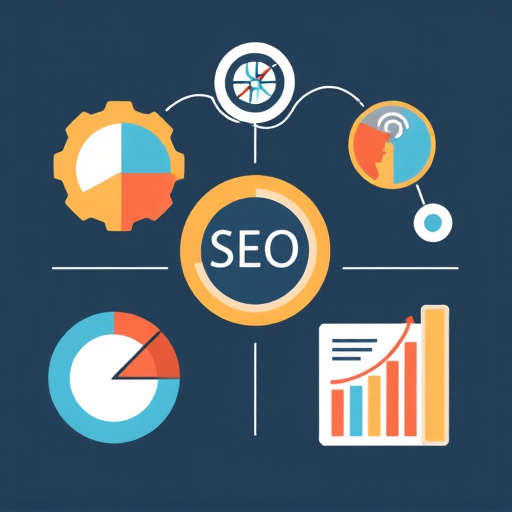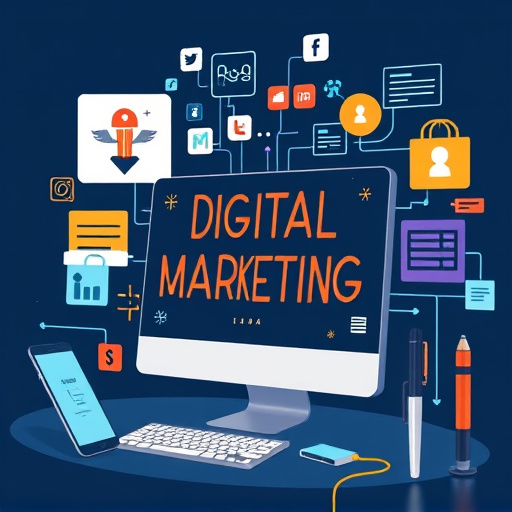Category: website design company
Website Design Company: A Comprehensive Overview
Introduction
In today’s digital age, a website is no longer a luxury but an indispensable tool for businesses and organizations worldwide. It serves as the virtual face of a company, facilitating interactions with customers, partners, and stakeholders. At the forefront of this digital revolution are website design companies, skilled in crafting captivating online experiences that drive business growth and success.
This article aims to provide an in-depth exploration of website design companies, delving into their definition, global impact, economic significance, technological advancements, regulatory landscape, challenges, and future prospects. By the end, readers will gain a comprehensive understanding of this dynamic industry and its crucial role in shaping the digital world.
Understanding Website Design Company: Unlocking Digital Potential
Definition and Core Components
A website design company is a specialized business that offers professional services for creating, redesigning, and maintaining websites. These companies comprise a team of experts, including web designers, developers, content writers, SEO specialists, and project managers. Their collective goal is to transform client visions into functional, visually appealing, and user-friendly websites.
The core components of their service include:
-
Web Design: This involves the aesthetic and graphical aspects of a website, ensuring it is visually engaging and aligns with brand identity. Designers use tools like Adobe Photoshop, Illustrator, or Sketch to create layouts, choose color schemes, and develop responsive design solutions.
-
Web Development: Developers bring the design to life by writing code using languages such as HTML, CSS, JavaScript, PHP, and Python. They build websites from scratch or utilize content management systems (CMS) like WordPress, Drupal, or Shopify to streamline content management.
-
User Experience (UX) Optimization: A crucial aspect that ensures a website is easy to navigate, user-friendly, and provides a seamless experience. UX specialists conduct user research, create wireframes, and test the site’s usability.
-
Content Creation and Strategy: Writing compelling web content that engages users and aligns with SEO best practices is essential. This includes crafting copy, developing blog strategies, and optimizing meta tags.
-
Search Engine Optimization (SEO): A critical service to enhance a website’s visibility on search engines like Google. SEO specialists optimize websites through keyword research, on-page optimization, link building, and analytics tracking.
-
Website Maintenance and Support: Ongoing maintenance ensures websites remain secure, up-to-date, and functional. This includes regular updates, bug fixing, content refreshes, and server management.
Historical Context and Evolution
The concept of website design companies has evolved significantly since the early days of the internet. In the 1990s, as the World Wide Web grew in popularity, small businesses started recognizing the need for online presence. This led to the emergence of early web design firms that focused on creating basic static websites primarily using HTML and CSS.
With the introduction of content management systems (CMS) like WordPress in 2003, website development became more accessible, democratizing digital content creation. Today, CMS platforms power a significant portion of the web, allowing businesses to manage their own websites without extensive coding knowledge.
Over time, website design companies have become more sophisticated, incorporating responsive design, mobile optimization, e-commerce functionality, and advanced SEO strategies into their service offerings. The rise of data analytics has also enabled these companies to track user behavior, providing insights for informed design and development decisions.
Global Impact and Trends: A Digital Web of Connections
International Reach and Influence
Website design companies operate globally, serving clients across diverse industries and regions. Their influence is evident in the growing number of multinational corporations with robust online presences, as well as small businesses expanding their reach through digital platforms.
Key factors contributing to this global impact include:
-
Outsourcing: Many businesses opt to outsource web design and development services due to cost savings, access to specialized talent, and time zone advantages. This allows companies to focus on their core competencies while leveraging international expertise.
-
Digital Transformation: Governments worldwide are promoting digital transformation to enhance economic growth and citizen engagement. As a result, public sector organizations are increasingly commissioning website design companies to create modern, user-centric digital services.
-
E-commerce Expansion: The rise of e-commerce has been a significant driver, with businesses globally seeking professional websites to showcase products, facilitate online transactions, and expand their customer base.
Regional Trends Shaping the Industry
Different regions have unique trends and challenges that shape the website design company landscape:
| Region | Trends/Challenges |
|---|---|
| North America | High competition, demand for AI-driven solutions, focus on data privacy (e.g., CCPA). |
| Europe | Strict data protection regulations (GDPR), emphasis on ethical design and accessibility. |
| Asia Pacific | Rapid e-commerce growth, mobile-first approach, unique cultural design preferences. |
| Middle East & Africa | Increasing digital government services, focus on localizing content for diverse languages. |
Economic Considerations: Digital Drivers of Growth
Market Dynamics and Investment Patterns
The website design company market is dynamic and highly competitive, with various segments catering to specific needs. According to a 2021 report by Grand View Research, the global web design services market size was valued at USD 164.7 billion in 2020 and is expected to grow at a CAGR of 13.5% from 2021 to 2028.
Key market drivers include:
-
Digitalization Trends: The rapid adoption of digital technologies across industries has fueled the demand for professional web design services.
-
Small and Medium Enterprises (SMEs): SMEs are increasingly investing in website design to enhance their online presence and compete with larger corporations.
-
E-commerce Boom: The surge in online retail has driven the need for user-friendly, conversion-focused e-commerce websites.
Role in Economic Systems
Website design companies play a vital role in economic systems by:
-
Driving Digital Economy Growth: They contribute to GDP growth by creating digital assets that facilitate trade, communication, and service provision.
-
Generating Employment: These companies employ designers, developers, marketers, and project managers, contributing to local employment rates.
-
Promoting Business Innovation: By providing cutting-edge web solutions, they enable businesses to innovate, enter new markets, and stay competitive.
Technological Advancements: Shaping the Digital Horizon
Significant Tech Trends and Their Impact
Technological advancements have been transformative for website design companies, opening up new possibilities and challenges:
-
Responsive Design and Mobile Optimization: The rise of mobile devices has made responsive design a non-negotiable. Companies must ensure websites adapt seamlessly to different screen sizes, enhancing user experience and search engine rankings.
-
Artificial Intelligence (AI) and Machine Learning (ML): AI/ML technologies enable personalized content recommendations, automated chatbots, and intelligent image optimization. These tools enhance user engagement and improve website performance.
-
Voice Search Optimization: With the popularity of virtual assistants like Siri and Alexa, voice search has become a significant traffic source. Companies are optimizing websites for voice queries by focusing on natural language processing and long-tail keywords.
-
Augmented Reality (AR) and Virtual Reality (VR): AR/VR technologies offer immersive experiences, particularly in e-commerce and real estate. Website design companies are exploring these technologies to create engaging, interactive content.
Future Potential and Emerging Technologies
The future holds immense potential for website design companies as they embrace emerging technologies:
-
Blockchain Integration: Blockchain can enhance website security, enable smart contracts, and facilitate secure transactions. It also has the potential to revolutionize digital identity verification and content ownership.
-
Internet of Things (IoT) Integration: As IoT devices become more prevalent, website design companies will need to create seamless user experiences that incorporate connected devices and data synchronization.
-
Web3 and Decentralized Web: The concept of Web3 aims to create a more decentralized internet. Website designers must stay informed about blockchain-based technologies, non-fungible tokens (NFTs), and decentralized applications (dApps) to meet the evolving needs of clients in this space.
Policy and Regulation: Navigating Legal Waters
Key Policies and Regulations Governing Website Design Companies
The digital landscape is subject to various policies and regulations that impact website design companies:
-
Data Protection Laws: These include the General Data Protection Regulation (GDPR) in Europe, California Consumer Privacy Act (CCPA) in the US, and the Personal Data Protection Act (PDPA) in Asia. They dictate how businesses must handle user data, emphasizing privacy, consent, and transparency.
-
Copyright and Intellectual Property: Website design companies must respect copyright laws and ensure they have the necessary licenses for any content or assets used in web development.
-
Disability Accessibility Standards: Laws like the Web Content Accessibility Guidelines (WCAG) require websites to be accessible to individuals with disabilities, ensuring inclusivity.
Influence on Industry Development
These policies and regulations significantly influence the industry’s growth and practices:
-
Compliance Costs: Companies must invest in training, tools, and processes to ensure compliance, impacting their operational expenses.
-
Data Privacy Concerns: Strict data protection laws have led to increased focus on secure coding practices, data encryption, and user consent management.
-
Ethical Design Practices: Regulations promote ethical design choices, ensuring websites do not mislead users or exploit vulnerable populations.
Challenges and Criticisms: Overcoming Obstacles
Main Challenges Faced by Website Design Companies
Despite their success, website design companies encounter several challenges:
-
Competition and Market Saturation: The high competition in the industry can make it challenging for companies to stand out and attract clients.
-
Keeping Up with Technology: Rapid technological advancements require continuous learning and investment in new tools and skills to remain relevant.
-
Client Expectations Management: Managing client expectations, especially regarding project timelines and budget, is crucial to maintaining strong client relationships.
-
Cybersecurity Threats: With increasing cyberattacks, companies must invest in robust security measures to protect client data and maintain trust.
Proposed Solutions and Strategies
To overcome these challenges, website design companies can implement the following strategies:
-
Specialization and Niche Marketing: Focusing on specific industries or services allows companies to develop deep expertise, attracting niche clients and setting themselves apart.
-
Continuous Learning and Training: Investing in employee training ensures teams stay updated with the latest technologies, trends, and best practices.
-
Agile Project Management: Adopting agile methodologies enhances project flexibility, improves client communication, and enables faster response times to changing requirements.
-
Security as a Core Priority: Implementing robust security measures, conducting regular audits, and staying informed about emerging threats are essential for data protection.
Case Studies: Real-World Success Stories
Example 1: Redefining E-commerce with Personalization
Company: E-com Design Solutions
Challenge: A leading online retailer sought to enhance its e-commerce platform, aiming to increase sales and improve customer retention. The existing website lacked personalization, resulting in high bounce rates and low conversion rates.
Solution: E-com Design Solutions employed AI/ML technologies to create a dynamic, personalized shopping experience. They implemented product recommendations based on user behavior and preferences, along with targeted marketing campaigns.
Results: Within six months, the website saw a 35% increase in sales, a 20% reduction in cart abandonment rate, and improved customer satisfaction scores, demonstrating the power of AI-driven personalization.
Example 2: Transforming Government Services with Digital Innovation
Agency: CivicTech Innovations
Project: Revamp the online services portal for a major city’s municipal government to enhance citizen engagement and service accessibility.
Approach: CivicTech Innovations conducted extensive user research, involving diverse community members. They designed an intuitive, mobile-first platform with simple navigation, clear language, and customizable profiles. The new website included self-service options for common requests, reducing the burden on city employees.
Impact: The redesigned portal saw a 40% increase in online service usage within the first year, leading to improved efficiency, reduced wait times, and enhanced citizen satisfaction.
Example 3: Leveraging AR for Immersive Retail Experience
Company: Virtual Retailers Inc.
Mission: Create an augmented reality (AR) experience for a fashion retailer, allowing customers to virtually try on clothing items.
Strategy: Using AR technology, the company developed a mobile app that enables users to overlay digital clothing models onto themselves via their device cameras. Customers can browse through various styles and sizes, receiving real-time feedback on how the garments would look.
Achievements: The AR experience increased customer engagement by 65% and led to a 25% rise in online sales. It also provided valuable insights into consumer preferences, influencing future product designs.
Future Prospects: Looking Ahead
Potential Growth Areas
The website design company industry is poised for significant growth in several areas:
-
Sustainable Web Design: As environmental consciousness grows, companies will focus on eco-friendly web practices, using energy-efficient technologies and optimizing content delivery networks.
-
Web3 and Decentralized Services: With the evolving Web3 landscape, these companies will play a crucial role in helping clients navigate blockchain-based solutions and decentralized applications.
-
Hyper-Personalized Experiences: Advanced AI/ML technologies will enable hyper-personalized web experiences tailored to individual user preferences and behaviors.
Emerging Trends to Watch
-
Voice User Interfaces (VUIs): As voice search continues to gain popularity, VUIs will become more prevalent, allowing users to interact with websites using natural language commands.
-
AI-Driven Content Creation: AI technologies can generate content, from product descriptions to personalized emails, revolutionizing marketing and customer engagement.
-
Immersive Technologies (AR/VR): These technologies will continue to transform e-commerce, real estate, education, and entertainment, creating engaging, interactive web experiences.
Conclusion: Navigating the Digital Waves
Website design companies are at the forefront of shaping the digital world, empowering businesses to thrive in an increasingly online environment. Through their expertise, they help organizations navigate the complex landscape of technology, policy, and user expectations.
The industry’s evolution from basic static websites to dynamic, data-driven experiences reflects its adaptability and innovation. As we move forward, website design companies will continue to play a pivotal role in driving digital transformation, fostering economic growth, and enhancing user experiences worldwide.
FAQ Section: Answering Common Queries
Q: How do I choose the right website design company for my business?
A: Consider your business goals, industry, budget, and desired timeline. Research companies with relevant experience, review their portfolio, and check client testimonials to ensure they align with your needs.
Q: What are some key factors to consider when developing a new website?
A: Focus on user experience (UX), ensuring the site is mobile-friendly, easy to navigate, and visually appealing. Incorporate clear calls-to-action, optimize for search engines (SEO), and prioritize data security and privacy.
Q: How can I make my website more accessible to people with disabilities?
A: Follow Web Content Accessibility Guidelines (WCAG) to ensure your website is accessible to all. Implement features like alt text for images, keyboard navigation, closed captions for videos, and high contrast options. Regularly test and update your site to maintain accessibility.
Q: What are the potential risks of not keeping up with web security?
A: Cybersecurity threats can lead to data breaches, financial loss, reputational damage, and legal consequences. Regular security updates, strong encryption, secure hosting, and employee training are essential to protect against malicious attacks and ensure business continuity.
Unleash Business Potential: Website Design & Digital Strategies
Elevate Your Online Presence: Strategies for High-Performing Website Development

A successful online platform requires a strategic approach focusing on functionality, user experienc…….
Master SEO: Strategies for Website Design Company Content

Content writers enhancing website traffic for a web design company should focus on SEO basics like k…….
Data-Driven Design: Optimizing Websites with Analytics for Success

Modern web design prioritizes data-informed approaches, focusing on user behavior and market trends…….
User-Centric Web Design: Engaging Sites Through Empathy and Storytelling

Empathy and user-centric design are key to success in web design, especially in competitive markets…….
Web Design Secrets: Engage Users with Visual Usability

A website design company succeeds by combining data analytics and research with visual appeal and SE…….
Seamless Integration & Robust Websites: Professional Design Secrets

Seamless integration and robust online performance require a reputable website design company. These…….
Design Boosts: Website Appeal & Conversions for Sales Growth
Attract & Convert: Digital Strategies for Website Design Success

A well-designed website is crucial for businesses to attract and convert online prospects. Website d…….










